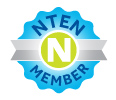So we tried to start a CiviCRM/Drupal based ASP to solve the constituent relationship management/website/online donation/ mass email problem that most charities face with CivicSpace. It failed, but that does not mean that another attempt will also fail.
There are three basic approaches to doing a CiviCRM/Drupal ASP:
- Technology first
- Customer first
- Hamster first
The technology first approach is building out the infrastructure to handle a high volume, self-service ASP.... low monthly price and high customer volume. This requires either piles of money or the super-committed technical geek founder to do the work. It relies on the build it first, then find the market approch. We did that at CivicSpace and we "ran out of runway".
Customer first says lets go out and build a lot of demand. Sure it will be really labor intensive to maintain the technology infrastructure and initially the customer service will not be great, but you avoid solving the technology problem until you have the real problem of too many customers and you need to build automation technology.
Hamster first is buy a VPS, put up a cool web page, market your product and hope for the best. The technology stack (CiviCRM/Drupal) is actually fine for this approach at the moment, but you'll face bulk mail deliverability, scalability, performance and other issues along the way.
Tech and customer both require a fair amount of capital to pay for the technology development (the ASP platform) or the marketing (making the service known in a very crowded vendor space). Hamster first could financially support a single consultant and once they have a working model, could easily be put in front of investors to attrach "expansion" capital rather than "start up" capital.
The other trap is the set up fees. We tried to make things self service... life is just too complicated. There has to be a set up service before your customer starts paying their monthly fee. My feeling is copy success... i.e. copy PicNet who have built a similar business on Joomla. People pay a couple thou to get started and then a monthly fee. I think they cracked an important part of the code.

